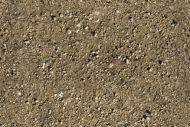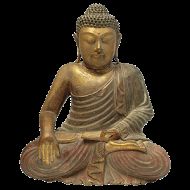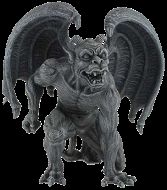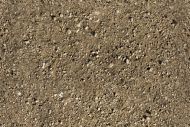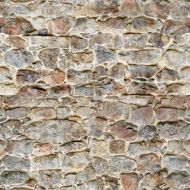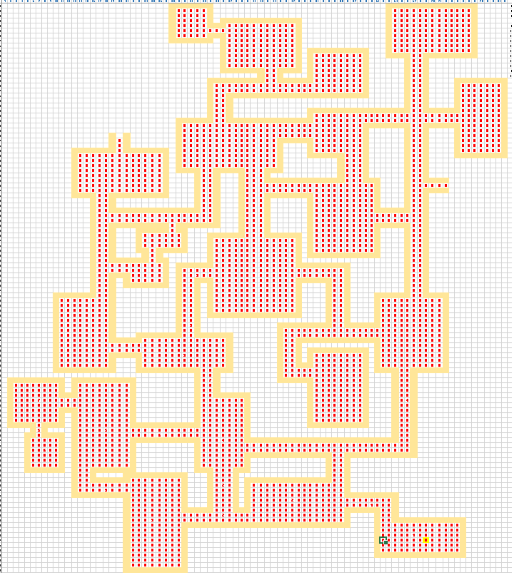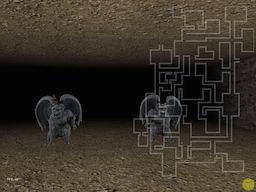Cocea编写的一款3D地牢游戏例程
# Cocea编写的一款3D地牢游戏例程
简单介绍:就是一款用 Codea 编写的第一人称视角的 3D 迷宫游戏,你可以用你的 iPad 在这个基础上学习 3D 编程,边修改边查看效果。
这个游戏说明用 Codea 可以编出各种类型的游戏来,唯一的限制是我们的想象力!
http://codea.io/talk/discussion/5746/huge-3d-dungeon-updates
Git代码链接:
https://gist.github.com/dermotbalson/ae547d75672ddfbaa06e
代码中使用到的贴图资源百度网盘地址:
其中也包括作者关于 Codea 编程的一些电子书(简单英文):
简单介绍:就是一款用 Codea 编写的第一人称视角的 3D 迷宫游戏,你可以用你的 iPad 在这个基础上学习 3D 编程,边修改边查看效果。
这个游戏说明用 Codea 可以编出各种类型的游戏来,唯一的限制是我们的想象力!
作者:@Ignatz
原始文档链接:http://codea.io/talk/discussion/5746/huge-3d-dungeon-updates
Git代码链接:
https://gist.github.com/dermotbalson/ae547d75672ddfbaa06e
代码中使用到的贴图资源百度网盘地址:
http://pan.baidu.com/s/1dDcSU9V
纹理贴图:
@x2
其中也包括作者关于 Codea 编程的一些电子书(简单英文):
http://pan.baidu.com/s/1bnzX7Vx
3D in Codea
http://pan.baidu.com/s/10FBMu
http://pan.baidu.com/s/1hqxL6V6
http://pan.baidu.com/s/1sjsJ0kd
http://pan.baidu.com/s/1i3vbDPF
http://pan.baidu.com/s/1dDByQ0D
截图:
代码:
--# Main
--Dungeon ver 1.0
--navigation
--touch left 1/3 of screen to turn left, right 1/3 of screen to turn right
--touch top 1/3 of screen to move forward, bottom 1/3 of screen to go backwards
--touch centre of screen to stop
--touching multiple times speeds up
--BUGS
--the navigation could probably be improved
--it is possible to walk through some walls (maybe my map showing which tiles are occupied, is faulty)
--also I think I have a hole in a wall somewhere
displayMode(FULLSCREEN)
supportedOrientations(LANDSCAPE_ANY)
function setup()
FPS=60
M=ReadMap() --see Map tab
--set up scene
--pass texture, texture scale (0.05 means reduce image by 95%), tile width, and wall height
S=Scene("Dropbox:3D-walls",0.05,M.width,M.height)
mapp={} --table which will hold the position of all the walls for collision avoidance
for i=1,M.size.x do mapp[i]={} end --initialise
--add walls to mesh
--add rooms
for i=1,#M.rooms do
for j,w in pairs(M.rooms[i].walls) do
S:AddSideWall(w,mapp)
end
end
--add corridors
for i=1,#M.corr do
for j,w in pairs(M.corr[i].walls) do
S:AddSideWall(w,mapp)
end
end
--images
--these are added differently, see Billboard class
images={}
for u,i in pairs(M.images) do
images[#images+1]=Billboard(i,M.width,M.height,mapp)
end
--create separate "scene" for floor/ceiling because it has different texture
F=Scene("Dropbox:3D-gravel1s",0.05,M.width,M.height)
F:AddFloorCeiling(M.floor)
--create map we can show on screen
MapScale=6 --scale
MapTrans=75 --transparency
MapImg=image(M.size.x*MapScale,M.size.y*MapScale)
setContext(MapImg)
rectMode(CENTER)
pushStyle()
fill(255,255,255,MapTrans)
for i=1,M.size.x do
for j=1,M.size.y do
if mapp[i][j]==1 then
rect(i*MapScale,j*MapScale,MapScale,MapScale)
end
end
end
popStyle()
setContext()
--starting position
--deduct 0.5 from x and z so we start in the middle of the specified tile
--concert from tile units to pixels
--z is made negative, if you don't know why, you should go read up on 3D to avoid great confusion
pos=vec3((M.startPos.x-0.5)*M.width,M.startPos.y*M.height,-(M.startPos.z-0.5)*M.width)
--player settings
angle=0 --player orientation
turnAngle=3 --how much player turns when screen is touched
--for smoother turning, when you tap to turn, targetAngle changes, and angle will move towards it..
targetAngle=0 --
--..the speed with which angle changes
angleChange=0.5
--"tall" is the height of the camera (sorry about variable names)
tall=M.startPos.y
--get the light range
range=M.range
--set the flicker as % of total light radius
flicker=0.3
--this is added to current position to set the camera direction
look=vec3(0,tall,-1000)
lookDist=1000 --this seems to duplicate the look var, need to investigate
--velocity
vel=vec3(0,0,0)
--current speed
speed=0
--height of the light we are holding
lightHeight=vec3(0,M.height*0.25,0)
--set position of map button
mapButtonRadius=25
mapButton=vec2(WIDTH-mapButtonRadius-5,mapButtonRadius+5)
mapShowing=false
--create map button
mapButtonImg=image(mapButtonRadius*2,mapButtonRadius*2)
setContext(mapButtonImg)
pushStyle()
fill(255,255,0,100)
ellipse(mapButtonImg.width/2,mapButtonImg.height/2,mapButtonRadius*2)
popStyle()
setContext()
fill(255)
fontSize(12)
end
function draw()
background(150)
FPS=0.95*FPS+0.05/DeltaTime --FPS is geometric average
perspective()
--move towards target angle if we are turning
if targetAngle~=angle then
if targetAngle<angle then angle=angle-angleChange else angle=angle+angleChange end
ChangeVel()
end
--camera pos
camera(pos.x,pos.y,pos.z,pos.x+look.x,look.y,pos.z+look.z)
--if we aren't walking into a wall, we can move
if CanMove(pos+vel,mapp) then pos=pos+vel else speed=0 end
--set flicker radius using noise
local u=range*(1+flicker*noise(ElapsedTime))
--draw all the walls
S:draw(pos+lightHeight,u) --pass light position and flicker level
--draw the floor and roof
F:draw(pos+lightHeight,u)
--draw billboard images (they are rotated first)
for a,i in pairs(images) do
i:draw(pos,u)
end
--draw FPS on screen
ortho()
viewMatrix(matrix())
text("FPS="..math.floor(FPS),50,50)
--draw map button
sprite(mapButtonImg,mapButton.x,mapButton.y)
DrawMap(pos)
end
--check if the square the player is in contains a wall
--there is a bug either in this or in my mapp table because I can
--sometimes walk through walls :(
function CanMove(v,m)
local a=PlayerTile(v)
if m[a.x][a.y]==1 then return false else return true end
end
function PlayerTile(v)
return vec2(math.floor(v.x/M.width+1),math.floor(-v.z/M.width+1))
end
--handles player movement
function touched(t)
--check for map touch first
if t.state==BEGAN then
if vec2(t.x,t.y):dist(mapButton)<mapButtonRadius then
mapShowing=not mapShowing
elseif t.tapCount==2 then
if t.x<WIDTH/3 then
targetAngle=targetAngle-90
elseif t.x>WIDTH*2/3 then
targetAngle=targetAngle+90
end
else
if t.x<WIDTH/3 then
targetAngle=targetAngle-turnAngle
elseif t.x>WIDTH*2/3 then
targetAngle=targetAngle+turnAngle
elseif t.y<HEIGHT/3 then
speed=speed-M.walk
ChangeVel()
elseif t.y>HEIGHT*2/3 then
speed=speed+M.walk
ChangeVel()
elseif vec2(WIDTH/2,HEIGHT/2):dist(vec2(t.x,t.y))<150 then
speed=0
targetAngle=angle
ChangeVel()
end
end
end
end
function DrawMap(p)
if not mapShowing then return end
local margin=8
local x,y=WIDTH-MapImg.width-margin,mapButtonRadius*2+margin
sprite(MapImg,x+MapImg.width/2,y+MapImg.height/2)
local a=PlayerTile(p)
pushStyle()
fill(255,255,0,MapTrans*2)
ellipse(x+p.x/M.width*MapScale,y-p.z/M.width*MapScale,MapScale)
popStyle()
end
function ChangeVel()
local a=math.rad(angle)
local s,c=math.sin(a),math.cos(a)
vel.x,vel.z=speed*s,-speed*c
look.x,look.z=lookDist*s,-lookDist*c
end
--handles billboarded images
Billboard=class()
--t is table of image,x,y,z in tile units, then ambient light fraction
--w,h are map.width,map.height, m is mapp table listing all the things the player can't walk through
--we will add the images to this table
function Billboard:init(t,w,h,m)
self.m=mesh()
self.width,self.height=w,h
m[t[2]][t[4]]=1 --mark this tie as occupied
local tex --for image
if type(t[1])=="string" then tex=readImage(t[1]) else tex=t[1] end
--set position in centre of tile
self.x,self.y,self.z=(t[2]-0.5)*self.width,t[3]*self.height,-(t[4]-0.5)*self.width
self.angle=0 --for rotating to face the player
self.count=0 --on;y rotate every few frames, use this counter
--add image to mesh
self.m:addRect(0,0,tex.width*self.y/tex.height,self.y)
self.m.texture=tex
--billboards have their own slightly modified shader to handle transparent pixels
self.m.shader=shader(TransTileShader.vertexShader,TransTileShader.fragmentShader)
self.m.shader.lightbase=t[5] --set ambient light
end
function Billboard:draw(p,r) --p is player position, r is current light range
self.m.shader.pos=p
self.m.shader.range=r
--adjust rotation every 10 frames
self.count=self.count+1
if self.count%10==0 then
--rotate to face player
local dx,dz=self.x-p.x,self.z-p.z
self.angle=math.deg(math.atan(dx/-dz))
end
pushMatrix()
translate(self.x,self.y/2,self.z)
rotate(-self.angle,0,1,0)
self.m.shader.mModel = modelMatrix()
self.m:draw()
popMatrix()
end
--main class for handling map wals, floor, roof
Scene=class()
function Scene:init(tex,s,w,h) --tex is image, s is image scaling, w,h are tile size and wall height
self.m=mesh()
if type(tex)=="string" then tex=readImage(tex) end
self.iw,self.ih=tex.width,tex.height
self.width,self.height=w,h
self.v,self.t={},{}
self.s=s or 1
self.m.texture=tex
self.m.shader=shader(TileShader.vertexShader,TileShader.fragmentShader)
end
--v1,v2,v3,v4 are positions of the four wall corners
function Scene:AddWall(v1,v2,v3,v4)
--figure out tex coords, ie which way the wall is pointing
local d=v2-v1
local dx,dy
if d.x~=0 then dx=d.x elseif d.y~=0 then dx=d.y else dx=d.z end
d=v3-v2
if d.x~=0 then dy=d.x elseif d.y~=0 then dy=d.y else dy=d.z end
--next bit is important for tiling, calculate texture upper limit as width of mesh / size of scaled image
local tx1,tx2=0,math.abs(dx)/self.iw/self.s
local ty1,ty2=0,math.abs(dy)/self.ih/self.s
--vertices
local n=#self.v
self.v[n+1],self.v[n+2],self.v[n+3],self.v[n+4],self.v[n+5],self.v[n+6]=v1,v2,v3,v3,v4,v1
--add to existing mesh vertices which are stored in a "buffer"
local b=self.m:buffer("position")
b:resize(n+6)
for i=1,#self.v do b[i]=self.v[i] end
--now the texture mappings
local n=#self.t
self.t[n+1],self.t[n+2],self.t[n+3],self.t[n+4],self.t[n+5],self.t[n+6]=
vec2(tx1,ty1),vec2(tx2,ty1),vec2(tx2,ty2),vec2(tx2,ty2),vec2(tx1,ty2),vec2(tx1,ty1)
--add to texture buffer
local b=self.m:buffer("texCoord")
b:resize(n+6)
for i=1,#self.t do b[i]=self.t[i] end
self.m:setColors(color(255))
end
--calculates corner vecs for a wall, given a vec4 containing (x1,z1,x2,z2)
function Scene:AddSideWall(v,m) --m is mapp table listing tiles containing walls
local x1,y1,z1=(v.x-0.5)*self.width,0,-(v.y-0.5)*self.width
local x2,y2,z2=(v.z-0.5)*self.width,self.height,-(v.w-0.5)*self.width
self:AddWall(vec3(x1,y1,z1),vec3(x2,y1,z2),vec3(x2,y2,z2),vec3(x1,y2,z1))
--update mapp table to show these tiles are occupied
if m then
for i=math.min(v.x,v.z),math.max(v.x,v.z) do
m[i][v.y]=1
end
for i=math.min(v.y,v.w),math.max(v.y,v.w) do
m[v.x][i]=1
end
end
end
--simpified version of AddSideWall, only this wall is horizontal
function Scene:AddFloorCeiling(v)
local x1,z1=(v.x-0.5)*self.width,-(v.y-0.5)*self.width
local x2,z2=(v.z-0.5)*self.width,-(v.w-0.5)*self.width
self:AddWall(vec3(x1,0,z1),vec3(x2,0,z1),vec3(x2,0,z2),vec3(x1,0,z2))
self:AddWall(vec3(x1,self.height,z1),vec3(x2,self.height,z1),vec3(x2,self.height,z2),vec3(x1,self.height,z2))
end
--not used
function Scene:AddLight(v)
self.m.shader.light=vec3(v.x*self.width,v.y*self.height,v.z*self.width)
end
function Scene:draw(p,r)
self.m.shader.pos=p
self.m.shader.range=r
self.m.shader.mModel = modelMatrix()
self.m:draw()
end
--this shader used by the walls, floor, roof
TileShader = {
vertexShader = [[
uniform mat4 modelViewProjection;
uniform mat4 mModel;
attribute vec4 position;
attribute vec4 color;
attribute vec2 texCoord;
varying lowp vec4 vColor;
varying highp vec2 vTexCoord;
varying highp vec4 vPosition;
void main()
{
vColor = color;
vTexCoord = texCoord;
gl_Position = modelViewProjection * position;
vPosition = mModel * position; //needed to set light intensity
}
]],
fragmentShader = [[
precision highp float;
uniform lowp sampler2D texture;
uniform lowp float range; //light range
uniform lowp vec3 pos; //position of player
varying lowp vec4 vColor;
varying highp vec2 vTexCoord;
varying highp vec4 vPosition; //position of current pixel
void main()
{
float f=max(0.,1.0-length( pos - vPosition.xyz ) / range); //light reduces linearly with distance
//next is the magic line of code that tiles the image across areas of any size
//it is multiplied by the light intensity calculated above
lowp vec4 col = f*texture2D( texture, vec2(mod(vTexCoord.x,1.0), mod(vTexCoord.y,1.0)));
col.a=1.0;
gl_FragColor =col;
}
]]
}
--this shader is used by the images
--the only difference is that transparent pixes are discarded
TransTileShader = {
vertexShader = [[
uniform mat4 modelViewProjection;
uniform mat4 mModel;
attribute vec4 position;
attribute vec4 color;
attribute vec2 texCoord;
varying lowp vec4 vColor;
varying highp vec2 vTexCoord;
varying highp vec4 vPosition;
void main()
{
vColor = color;
vTexCoord = texCoord;
gl_Position = modelViewProjection * position;
vPosition = mModel * position;
}
]],
fragmentShader = [[
precision highp float;
uniform lowp sampler2D texture;
uniform lowp float range;
uniform lowp float lightbase;
uniform lowp vec3 pos;
varying lowp vec4 vColor;
varying highp vec2 vTexCoord;
varying highp vec4 vPosition;
void main()
{
lowp vec4 col = texture2D( texture, vTexCoord );
if (col.a==0.0) discard; //this is the only difference
else {
//lightbase below is the ambient light of this object, gives it a glow if you want one
float f=max(0.,1.0-length( pos - vPosition.xyz ) / range)+lightbase;
col = col*f;
col.a=1.0;
gl_FragColor=col;
}
}
]]
}
--# Map
--Dungeon map
--this map is organised as a table
--the map is a rectangular grid of squares
--image here: http://i1303.photobucket.com/albums/ag142/ignatz_mouse/dungeon_zpsc89352fc.png
--Thinking I would have to cull (ie ony draw stuff directly around the player), I organised the map
--to have corridors between all the rooms. This made it easier to say "if you are in room X, also draw
--corridors "Y and Z". It proved unnecessary - so far.
--anyway, that is why I have organised the walls by room, and separatey for rooms and corridors
--LOCATION OF IMAGES REQUIRED
--https://www.dropbox.com/sh/i7stxdfcnnh8azx/AAByAiTG7oswE7nczwZj4pxUa?dl=0
function ReadMap()
local map={}
map.width=10 --number of pixels per square (not a good variable name!)
map.height=20 --height of walls in pixels
map.size=vec2(82,114) --number of tiles wide and deep
map.startPos=vec3(72,0.5,8) --starting tile
map.walk=0.2 --speed change (pixels/sec) when you touch screen
map.range=100 --range of light, in pixels
map.rooms,map.corr={},{} --rooms and corridors stored separately
--load the map coordinates
local m,c=map.rooms,map.corr
for i=1,23 do m[i]={} end
for i=1,30 do c[i]={} end
--the rooms and corr tables have provision for wall and neighbour settings
--I'm only using wall settings, as explained above
--room 1
--each wall is stored in a vec4 = (x1,z1,x2,z2) in tile units
--no need for a y value, we know each wall goes from 0 to map.height
m[1].walls={vec4(64,11,75,11),vec4(75,11,75,4),vec4(61,4,75,4),vec4(61,10,61,4)}
--m[1].neighbours={m.corr1} --this was where I was going to specify neighbours
m[2].walls={vec4(41,10,56,10),vec4(56,13,56,10),
vec4(40,19,40,13),vec4(40,19,53,19),vec4(56,19,56,16)}
m[3].walls={vec4(21,16,21,1),vec4(21,1,30,1),vec4(30,10,30,1),vec4(30,20,30,13),
vec4(21,20,30,20),vec4(21,20,21,19)}
m[4].walls={vec4(32,21,34,21),vec4(32,27,32,21),vec4(32,36,32,30),
vec4(38,21,40,21),vec4(40,24,40,21),vec4(40,36,40,27),vec4(35,36,40,36)}
m[5].walls={vec4(13,33,13,21),vec4(16,21,22,21),vec4(22,27,22,21),
vec4(22,39,22,30),vec4(13,39,22,39),vec4(13,39,13,36)}
m[6].walls={vec4(8,28,11,28),vec4(11,28,11,21),vec4(5,21,11,21),vec4(5,28,5,21),vec4(5,28,6,28)}
m[7].walls={vec4(2,39,2,30),vec4(2,30,6,30),vec4(8,30,11,30),
vec4(11,33,11,30),vec4(11,39,11,36),vec4(2,39,11,39)}
m[8].walls={vec4(50,39,50,30),vec4(50,30,59,30),vec4(59,45,59,30),
vec4(50,45,59,45),vec4(50,45,50,42)}
m[9].walls={vec4(23,48,23,47),vec4(23,48,29,48),vec4(32,48,37,48),
vec4(37,48,37,41),vec4(35,41,37,41),vec4(23,41,32,41),vec4(23,44,23,41)}
m[10].walls={vec4(10,56,16,56),vec4(10,56,10,41),vec4(10,41,19,41),vec4(19,44,19,41),vec4(19,56,19,47)}
m[11].walls={vec4(34,68,34,62),vec4(34,68,39,68),vec4(34,59,34,52),
vec4(34,52,48,52),vec4(48,59,48,52),vec4(48,68,48,62),vec4(43,68,48,68)}
m[12].walls={vec4(61,56,61,50),vec4(61,56,66,56),vec4(69,56,72,56),
vec4(72,56,72,41),vec4(67,41,72,41),vec4(61,41,64,41),vec4(61,47,61,41)}
m[13].walls={vec4(13,85,19,85),vec4(13,85,13,76),vec4(13,76,16,76),
vec4(19,76,27,76),vec4(27,85,27,76),vec4(21,85,27,85)}
m[14].walls={vec4(29,91,29,81),vec4(29,81,32,81),vec4(35,81,39,81),
vec4(43,81,45,81),vec4(45,87,45,81),vec4(37,91,45,91),vec4(29,91,34,91)}
m[15].walls={vec4(50,93,50,91),vec4(50,93,58,93),vec4(50,87,50,84),vec4(50,84,55,84),vec4(59,90,59,84)}
m[16].walls={vec4(50,76,50,64),vec4(50,64,61,64),vec4(61,70,61,64),
vec4(61,79,61,73),vec4(59,79,61,79),vec4(51,79,55,79)}
m[17].walls={vec4(74,99,74,93),vec4(74,99,82,99),vec4(82,99,82,84),vec4(74,84,82,84),vec4(74,90,74,84)}
m[18].walls={vec4(50,105,50,99),vec4(50,105,59,105),vec4(59,105,59,96),vec4(51,96,59,96)}
m[19].walls={vec4(28,114,28,107),vec4(28,107,34,107),vec4(28,114,34,114),
vec4(34,114,34,110),vec4(34,108,34,107)}
m[20].walls={vec4(36,111,36,110),vec4(36,111,48,111),vec4(48,111,48,101),
vec4(45,101,48,101),vec4(36,101,42,101),vec4(36,108,36,101)}
m[21].walls={vec4(63,114,63,104),vec4(63,114,77,114),vec4(77,114,77,104),
vec4(69,104,77,104),vec4(63,104,66,104)}
m[22].walls={vec4(23,69,23,65),vec4(23,69,27,69),vec4(29,69,30,69),
vec4(30,69,30,65),vec4(26,65,30,65),vec4(23,65,24,65)}
m[23].walls={vec4(21,63,24,63),vec4(26,63,27,63),vec4(27,63,27,58),vec4(21,58,27,58),vec4(21,60,21,58)}
--corridors now
c[1].walls={vec4(56,13,61, 13),vec4(61,13,61, 10),vec4(56,16,64, 16),vec4(64,16,64, 11)}
c[2].walls={vec4(38,13,40, 13),vec4(38,21,38, 13),vec4(34,21,34, 13),
vec4(30,13,34, 13),vec4(30,10,41, 10)}
c[3].walls={vec4(16,19,21,19),vec4(16,21,16,19),vec4(13,16,21,16),vec4(13,21,13,16)}
c[4].walls={vec4(53,24,53,19),vec4(56,24,56,19),vec4(40,24,53,24),
vec4(56,24,67,24),vec4(40,27,64,27),vec4(64,41,64,27),vec4(67,41,67,24)}
c[5].walls={vec4(8,30,8,28),vec4(6,30,6,28)}
c[6].walls={vec4(22,27,32,27),vec4(22,30,32,30)}
c[7].walls={vec4(32,41,32,36),vec4(35,41,35,36)}
c[8].walls={vec4(19,47,23,47),vec4(19,44,23,44)}
c[9].walls={vec4(29,62,29,48),vec4(32,59,32,48),vec4(29,62,34,62),vec4(32,59,34,59)}
c[10].walls={vec4(48,59,53,59),vec4(48,62,56,62),vec4(56,62,56,50),
vec4(53,59,53,50),vec4(56,50,61,50),vec4(45,50,53,50),vec4(45,50,45,39),
vec4(45,39,50,39),vec4(48,42,50,42),vec4(48,47,48,42),vec4(48,47,61,47)}
c[11].walls={vec4(66,70,66,56),vec4(69,77,69,56),vec4(66,77,66,73),vec4(61,73,66,73),vec4(61,70,66,70)}
c[12].walls={vec4(66,90,66,78),vec4(69,90,69,79)}
c[13].walls={vec4(69,93,74,93),vec4(69,90,74,90)}
c[14].walls={vec4(58,93,66,93),vec4(59,90,66,90)}
c[15].walls={vec4(45,91,50,91),vec4(45,87,50,87)}
c[16].walls={vec4(19,88,19,85),vec4(21,88,21,85)}
c[17].walls={vec4(43,79,51,79),vec4(43,76,50,76)}
c[18].walls={vec4(16,76,16,56),vec4(19,60,19,56),vec4(19,70,19,63),vec4(19,76,19,73)}
c[19].walls={vec4(19,63,21,63),vec4(19,60,21,60)}
c[20].walls={vec4(19,73,32,73),vec4(19,70,27,70),vec4(29,70,35,70),vec4(35,81,35,70),vec4(32,81,32,73)}
c[21].walls={vec4(39,81,39,68),vec4(43,81,43,79),vec4(43,76,43,68)}
c[22].walls={vec4(34,99,34,91),vec4(34,99,42,99),vec4(37,96,50,96),vec4(45,99,50,99),vec4(37,96,42,96)}
c[23].walls={vec4(42,101,42,99),vec4(45,101,45,99)}
c[24].walls={vec4(34,110,36,110),vec4(34,108,36,108)}
c[25].walls={vec4(66,104,66,93),vec4(69,104,69,93)}
c[26].walls={vec4(55,84,55,79),vec4(59,84,59,79)}
c[27].walls={vec4(69,79,72,79),vec4(69,77,72,77)}
c[28].walls={vec4(24,65,24,63),vec4(26,65,26,63)}
c[29].walls={vec4(11,36,13,36),vec4(11,33,13,33)}
c[30].walls={vec4(27,70,27,69),vec4(29,70,29,69)}
--floor coords, wil be used for roof too
map.floor=vec4(2,1,82,114)
--set of images to be billboarded
--table contains image, x, y, z, s
--where x,z are tile positions, y is fraction of map.height
--and s is ambient lighting, 0 for none, 1 for bright, this property makes them glow in the dark
map.images={
{readImage("Dropbox:Gargoyle"),53,0.5,16,0.2},
{readImage("Dropbox:Gargoyle"),53,0.5,14,0.2},
{readImage("Dropbox:Buddha1"),34,0.5,23,0.2},
{readImage("Dropbox:Buddha2"),36,0.5,11,0.4}
}
return map
end
